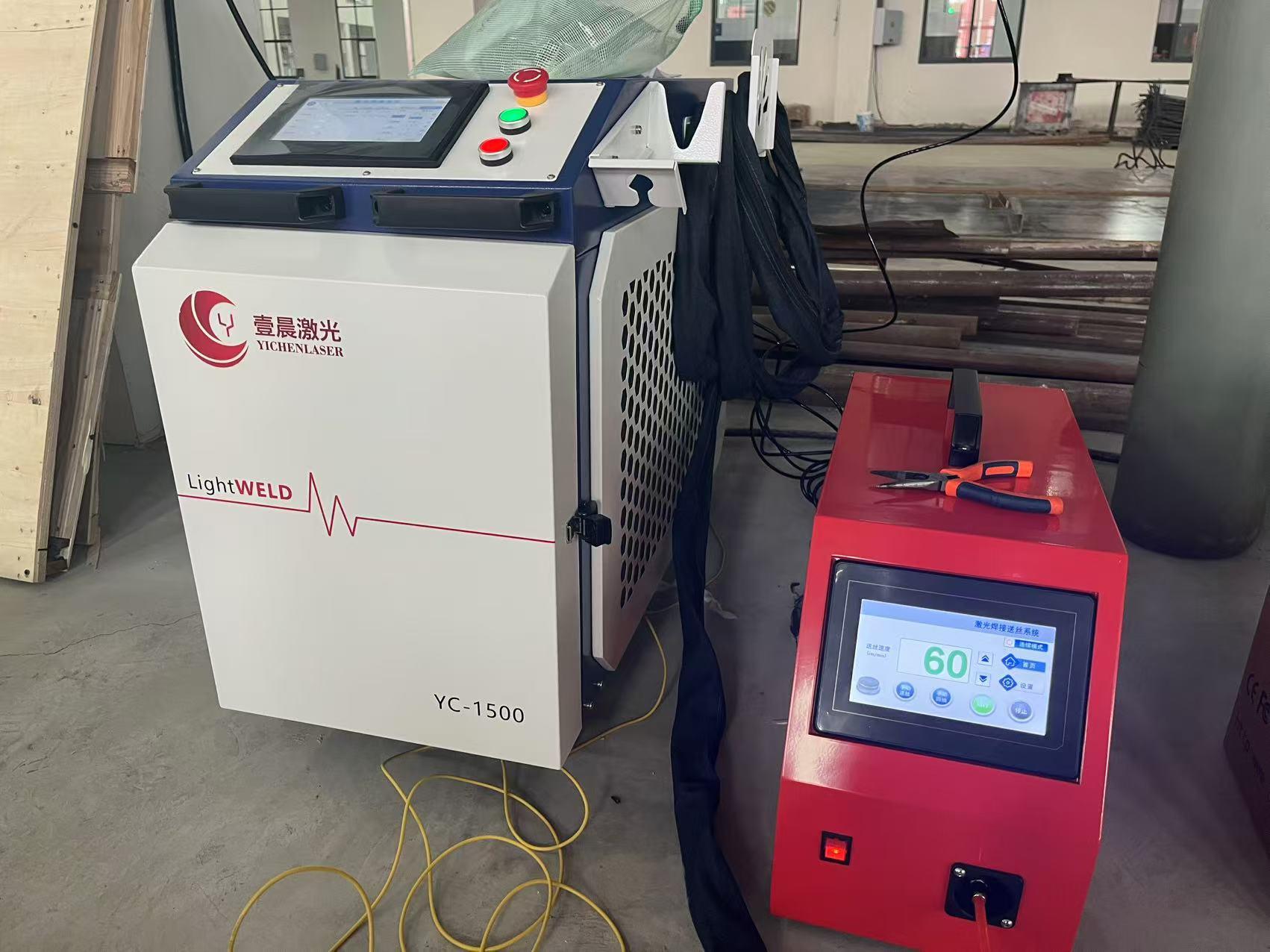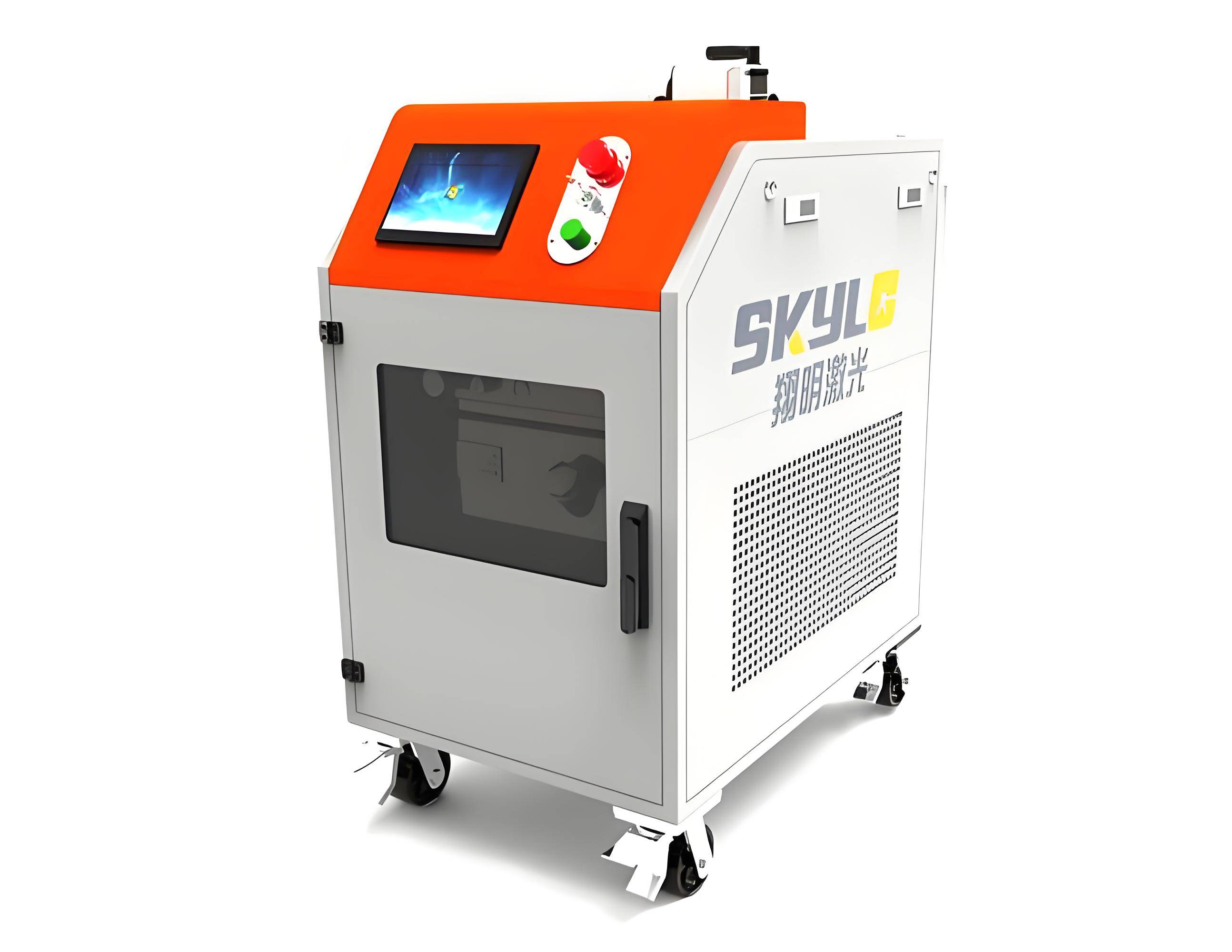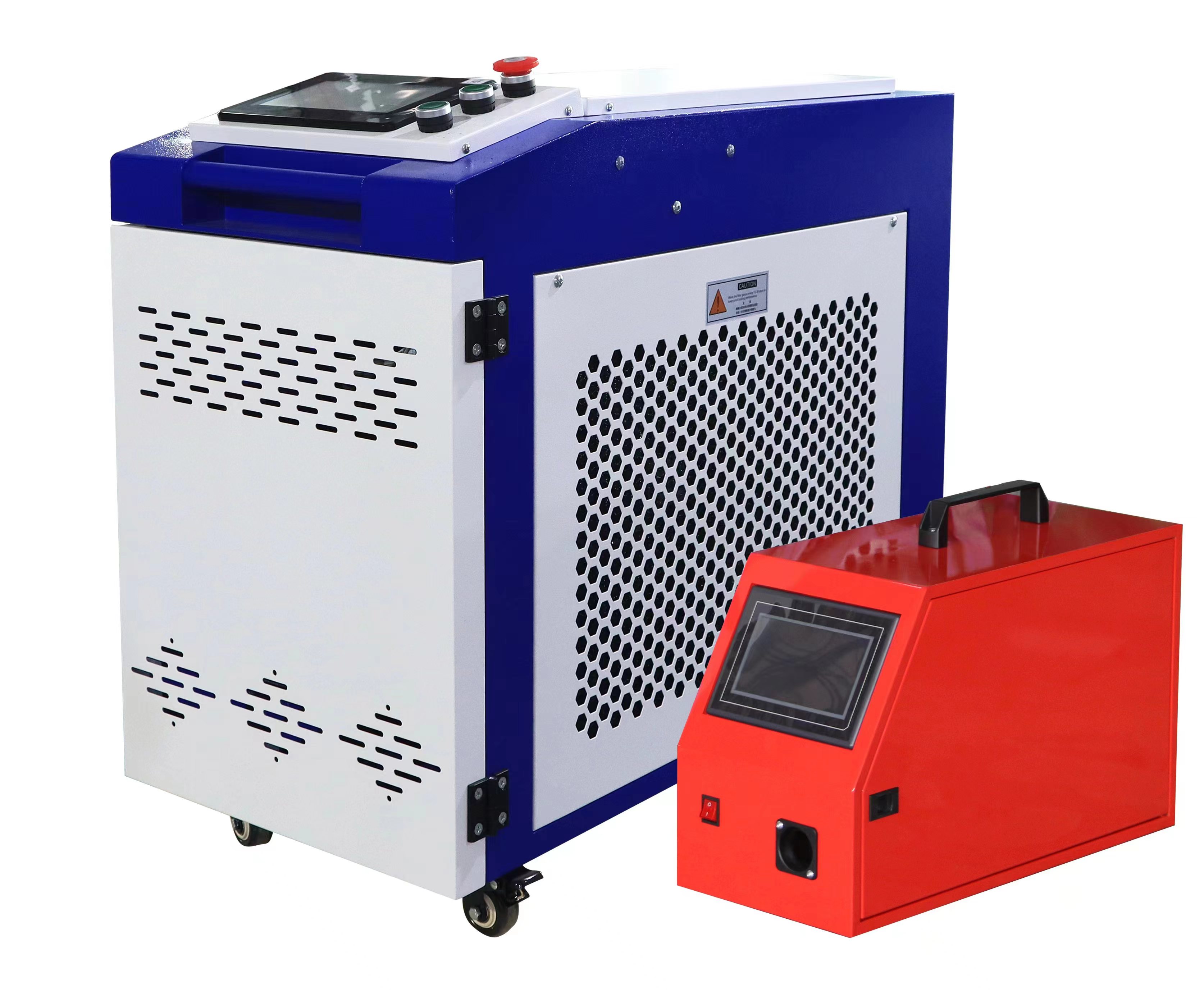Having worked in metal surface treatment for fifteen years, I’ve had the chance to explore a wide range of rust removal techniques, each with its own strengths. From old-school sandpaper to cutting-edge laser technology, I’ve seen it all. Lately, a question I keep hearing is: Which is more effective, laser rust removal or sandblasting? Both methods have their merits, and the best choice depends on your specific needs. In this article, I’ll share my hands-on experience and industry insights to compare their effectiveness, cost, applicability, and pros and cons, helping you decide which approach suits you best.

How Laser Rust Removal and Sandblasting Work
To understand which method delivers better results, let’s first look at how they function.
Laser Rust Removal uses a high-energy laser beam to target metal surfaces, vaporizing or stripping away rust, grease, or other contaminants through a photothermal effect. The process is contact-free and consumable-free, with minimal damage to the base material, making it ideal for high-precision or eco-friendly applications. I first saw laser rust removal in action during an industrial restoration project, where a rusted steel plate was restored to a mirror-like finish in seconds—a truly impressive feat.
Sandblasting, on the other hand, involves blasting abrasive materials (like sand or steel shot) at high speed to physically strip rust and debris from metal surfaces. It’s highly efficient for large areas and heavy rust. Years ago, while working at a machinery plant, I used sandblasting to clean massive steel components, and the results were quick and striking, though the noise and dust were hard to ignore.
Comparing the Effectiveness of Both Methods
Effectiveness of Laser Rust Removal
Laser rust removal is incredibly precise, allowing targeted cleaning without affecting surrounding areas, and it can even preserve the metal’s original texture. I once used a 100W laser rust removal machine to clean a vintage motorcycle gas tank. The rust disappeared completely, leaving a smooth surface that barely needed further polishing. Best of all, it leaves no chemical residue, making it environmentally friendly and perfect for high-quality surface demands, like precision parts or decorative metal.
However, laser rust removal has its limits. For thick rust layers, it requires multiple passes, which can be time-consuming. If the surface has grease or coatings, the laser may struggle, often requiring pre-cleaning.
Effectiveness of Sandblasting
Sandblasting’s “brute force” approach is hard to beat for speed. It excels at clearing large areas of heavy rust. I recall working on a rusted steel bridge frame at a shipyard; with a high-pressure sandblaster and quartz sand, we cleaned a huge section in under 30 minutes. Sandblasting also creates a rough surface ideal for subsequent coatings, boosting adhesion in industrial settings.
The downsides are clear, though. Abrasive impact can damage the metal surface, causing micro-dents, especially on thin metal. Plus, the dust and noise generated are significant, requiring robust protective measures.

My Real-World Experience
To give you a clearer picture, here are two real-life examples from my work.
Laser Rust Removal Experience: Last year, I helped a friend restore an old bicycle with a rusty frame. Using a portable 50W laser rust removal machine, I carefully scanned the frame, and in about 20 minutes, it was spotless, with the original paint largely intact. The process was quiet and dust-free, creating a comfortable working environment. However, for thicker rust at the welds, the laser needed multiple passes, which slowed things down.
Sandblasting Experience: A couple of years ago, I assisted at a shipyard cleaning steel plates on a boat hull, where rust was thick and widespread. Using a high-pressure sandblaster with quartz sand, we cleared large sections in just 10 minutes. The results were impressive, but the dust cloud was intense, requiring full protective gear, and cleaning up the equipment and site afterward took significant effort.
These experiences taught me that laser rust removal shines in precise, small-scale tasks, while sandblasting is king for large areas and heavy rust. Your choice depends on the job at hand.
Pros and Cons Comparison Table
To make the comparison clearer, here’s a table summarizing the strengths and weaknesses:
| Feature | Laser Rust Removal | Sandblasting | Best Use Case |
|---|---|---|---|
| Cleaning Effectiveness | Precise, no chemical residue, minimal substrate damage, preserves texture | Fast for thick rust, ideal for large areas, but may damage surface | Laser: Precision parts; Sandblasting: Large structures |
| Environmental Impact | No consumables, no dust, eco-friendly | Generates significant dust and waste abrasives, requires disposal | Laser: Eco-conscious settings; Sandblasting: Industrial use |
| Ease of Operation | Simple, requires protective goggles, ideal for small tasks | Needs specialized equipment and heavy protective gear | Laser: Home/small workshops; Sandblasting: Professional teams |
| Cost | High upfront cost ($300-$2,800), no consumable costs | Lower equipment cost, but ongoing abrasive costs | Laser: Long-term investment; Sandblasting: Lower initial cost |
The table highlights that laser rust removal excels in precision and eco-friendliness, while sandblasting leads in speed and affordability for large-scale jobs.
Cost and Applicability Trade-Offs
Cost of Laser Rust Removal
Laser rust removal machines range from $300 to $2,800, with portable home models typically costing $300-$1,100 and industrial units pricier. The initial investment is steep, but with no consumables, long-term costs are low. My 50W machine, bought for $700, has cleaned over 100 small parts in a year, with electricity costs negligible, averaging less than $0.15 per use.
Cost of Sandblasting
Sandblasting equipment is more affordable, with small home units costing $150-$700 and industrial models higher. However, abrasives (like quartz sand or steel shot) are an ongoing expense, typically $1.50-$7 per use. At the shipyard, cleaning large steel plates cost about $30 in abrasives per session, plus labor and cleanup costs.
If you’re on a tight budget or tackling large jobs, sandblasting’s lower upfront cost is appealing. For frequent, long-term use, laser rust removal’s lack of consumables makes it more economical over time.

Applicability Differences
Laser Rust Removal Suits:
Precision Parts: Electronics or machinery components where surface integrity is critical.
Small DIY Projects: Restoring bicycles or iron furniture at home, with easy and eco-friendly operation.
Eco-Sensitive Settings: Cleaning food processing equipment or medical devices.
Sandblasting Suits:
Large Industrial Projects: Bridges, ship hulls, or steel structures where speed is key.
Heavy Rust: Thick rust or stubborn coatings that need quick removal.
Pre-Coating Prep: Creating a rough surface for better paint or coating adhesion.
My advice? Go for laser rust removal if you’re a DIYer or small workshop owner; opt for sandblasting for industrial-scale or heavily rusted projects.
Safety and Operational Considerations
Laser Rust Removal
Wear Protective Goggles: Lasers can cause severe eye damage; use wavelength-specific goggles.
Avoid Skin Exposure: Laser burns are a risk, so wear long sleeves.
Ventilation: While no chemical fumes are produced, minor metal dust may require a well-ventilated space.
Sandblasting
Protective Gear: Full protective suits, masks, and goggles are essential to avoid dust inhalation.
Waste Disposal: Used abrasives and rust debris need proper handling to prevent environmental harm.
Equipment Maintenance: Regularly check nozzles and air systems to prevent wear-related issues.
I learned these lessons the hard way. Once, during sandblasting, I didn’t secure my mask properly and coughed for days after inhaling dust. Similarly, a moment of carelessness without goggles during laser rust removal left my eyes irritated briefly. Safety is non-negotiable for both methods.

Future Trends and Decision-Making Tips
Laser rust removal, as a newer technology, is advancing fast. Portable models are becoming cheaper, with features like auto-focus and smart controls emerging. I expect prices to drop to $150 within a few years, boosting accessibility.
Sandblasting, while traditional, is also improving, with eco-friendlier abrasives and low-dust systems in development. However, laser rust removal’s green credentials align better with future environmental regulations.
Decision-Making Tips:
Budget-Conscious or Large Jobs: Choose sandblasting for its low initial cost and speed.
Precision and Eco-Friendliness: Opt for laser rust removal for small, high-quality tasks.
Hybrid Approach: For complex projects, use sandblasting for heavy rust, then laser for fine finishing.
Conclusion: Which Is More Effective?
Neither laser rust removal nor sandblasting is inherently superior—it all boils down to your needs. Laser rust removal excels in precision, eco-friendliness, and long-term cost savings, ideal for home, small workshops, or high-precision tasks. Sandblasting wins for speed and affordability in large-scale or heavily rusted projects.
For me, the laser rust removal machine is a trusty companion for small home projects, while sandblasting is my go-to for big industrial jobs. Consider your usage frequency, budget, and project type before deciding. If you’re unsure, try renting or testing both to see what works best for you.

Frequently Asked Questions
1. Which method causes less damage to metal surfaces?
Laser rust removal causes almost no damage, ideal for precision parts. Sandblasting can create micro-dents, less suitable for thin or high-precision metal.
2. Can laser rust removal fully replace sandblasting?
Not entirely. Laser rust removal is best for precise, small-scale tasks, while sandblasting excels at large areas and heavy rust. They can complement each other.
3. How can I manage dust from sandblasting?
Use enclosed or wet sandblasting systems to reduce dust, ensure good ventilation, and properly dispose of used abrasives.
4. How long do laser rust removal machines last?
High-quality machines have laser sources lasting tens of thousands of hours, with proper maintenance ensuring 5-10 years of use.
5. Which is better for home use?
Laser rust removal is better for home use due to its ease, lack of dust, and eco-friendliness. Sandblasting requires more space and protective measures, suiting professional settings.






